Sample information |
|
| Picture |
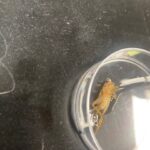

|
|---|---|
| Location | |
| Collection date | 09/12/2023 |
| Captive / Cultivated? | Captive / Cultivated |
| Group | Palm Beach Atlantic University |
| Observations | This insect was bought at a pet store. It was held captive in a cage with others of its kind. Owners of the store tried to mimic the insect’s natural habitat as best as possible in a container. |
| Putative identification | Arthropoda Insecta Orthoptera Gryllidae |
Methods |
|
| Extraction kit | DNeasy (Qiagen) |
| DNA extraction location | Abdomen |
| Single or Duplex PCR | Single Reaction |
| Gel electrophoresis system | MiniPCR |
| Buffer | TAE |
| DNA stain | GelGreen |
| Gel images |
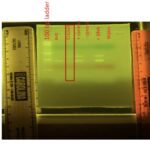
|
| Protocol notes | For the gel electrophoresis a 1kb ladder was used. 4uL of ladder was loaded along with 10uL of each sample combining corresponding tubes of Wolbachia and arthropod primers. The gel ran for 45 minutes. Lane 1- ladder, Lane 2- ant, Lane 3- Cricket Lane 4 (+) control, Lane 5 (-) control, Lane 6 – (+) DNA and Lane 7- water |
Results |
|
| Wolbachia presence | No |
| Confidence level | High |
| Explanation of confidence level | Analysis: My control worked but my cricket sample did not. There were bands at approximately 575bp indicative of arthropods in all the lanes except those of the negative controls. Then bands at 316bp indicative of the Wolbachia bacteria was only seen in the two positive controls and the ant sample. This indicates that the insect chosen (cricket) had its DNA amplified but that DNA was not infected by Wolbachia. |
| Wolbachia 16S sequence | |
| Arthropod COI sequence |
|
| Summary | The Gryllidae was found to be negative for Wolbachia. |
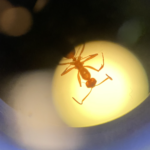 Formica Pallidefulva
Formica Pallidefulva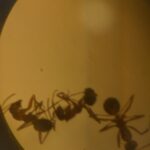 Formica Pallidefulva
Formica Pallidefulva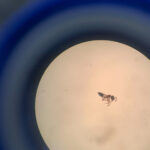 Ant
Ant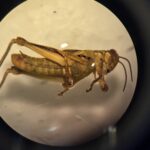 Differential Grasshopper – Melanoplus differentialis
Differential Grasshopper – Melanoplus differentialis Pill Bug (Armadillidium vulgare) – Draft
Pill Bug (Armadillidium vulgare) – Draft